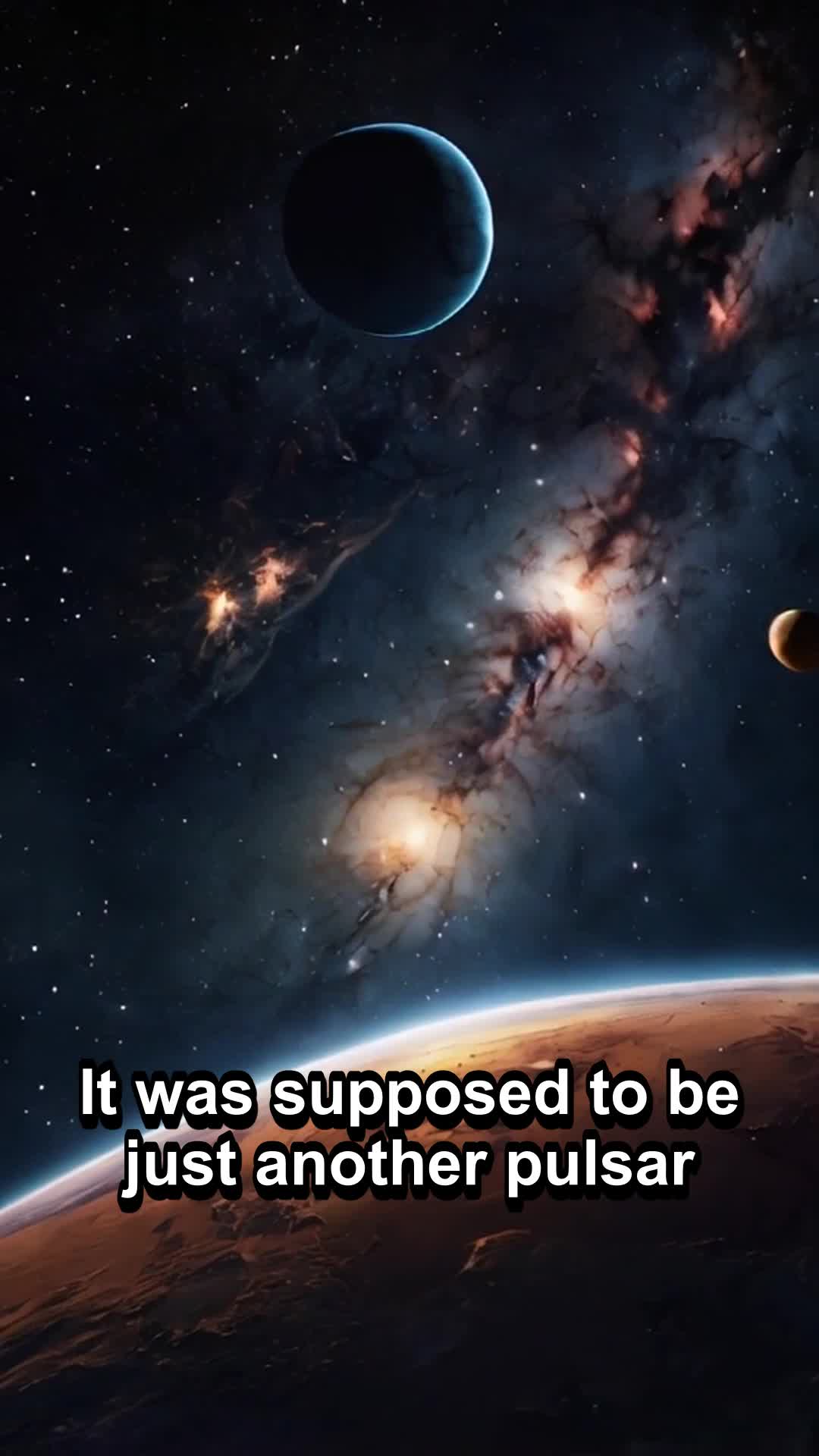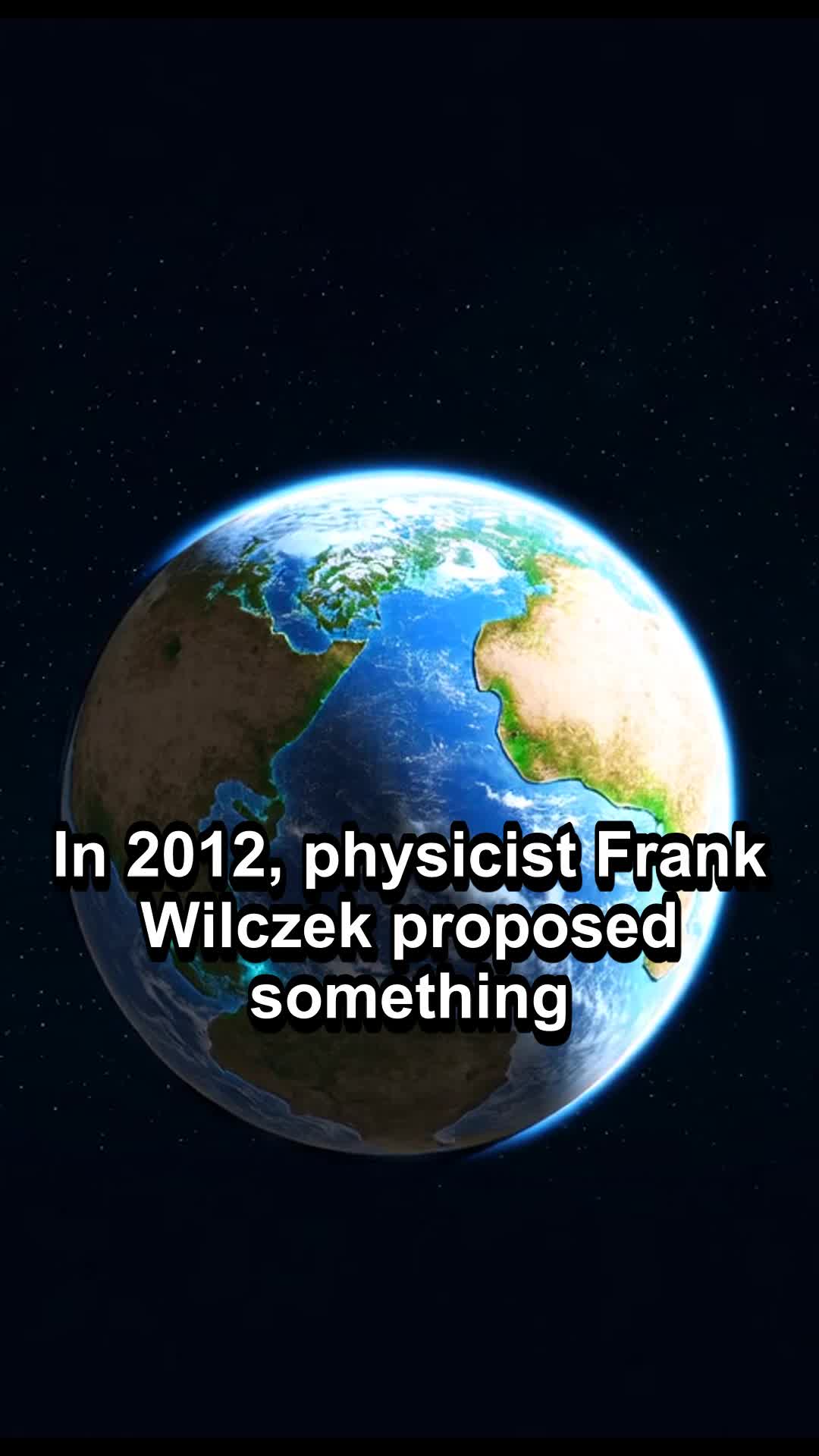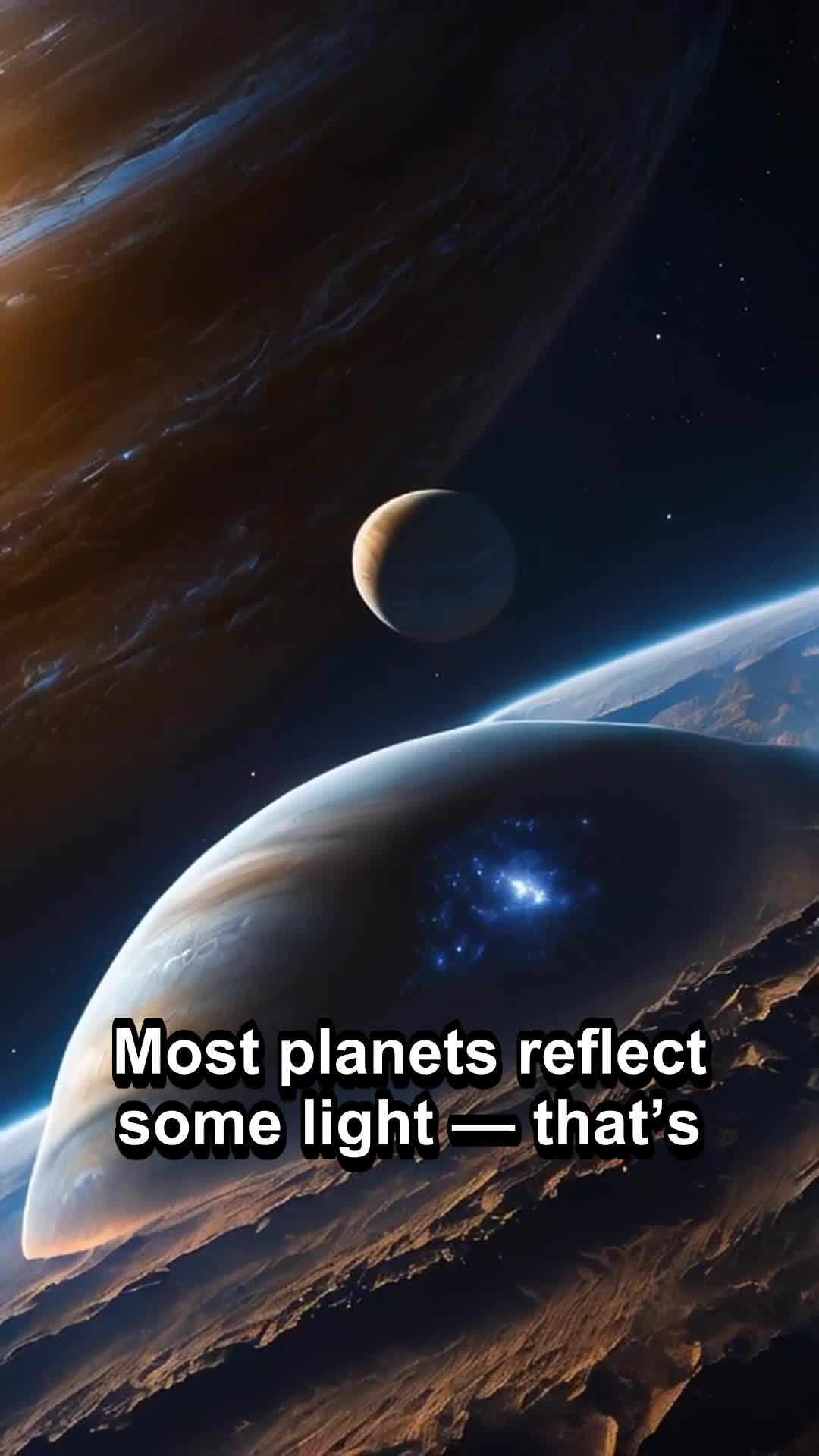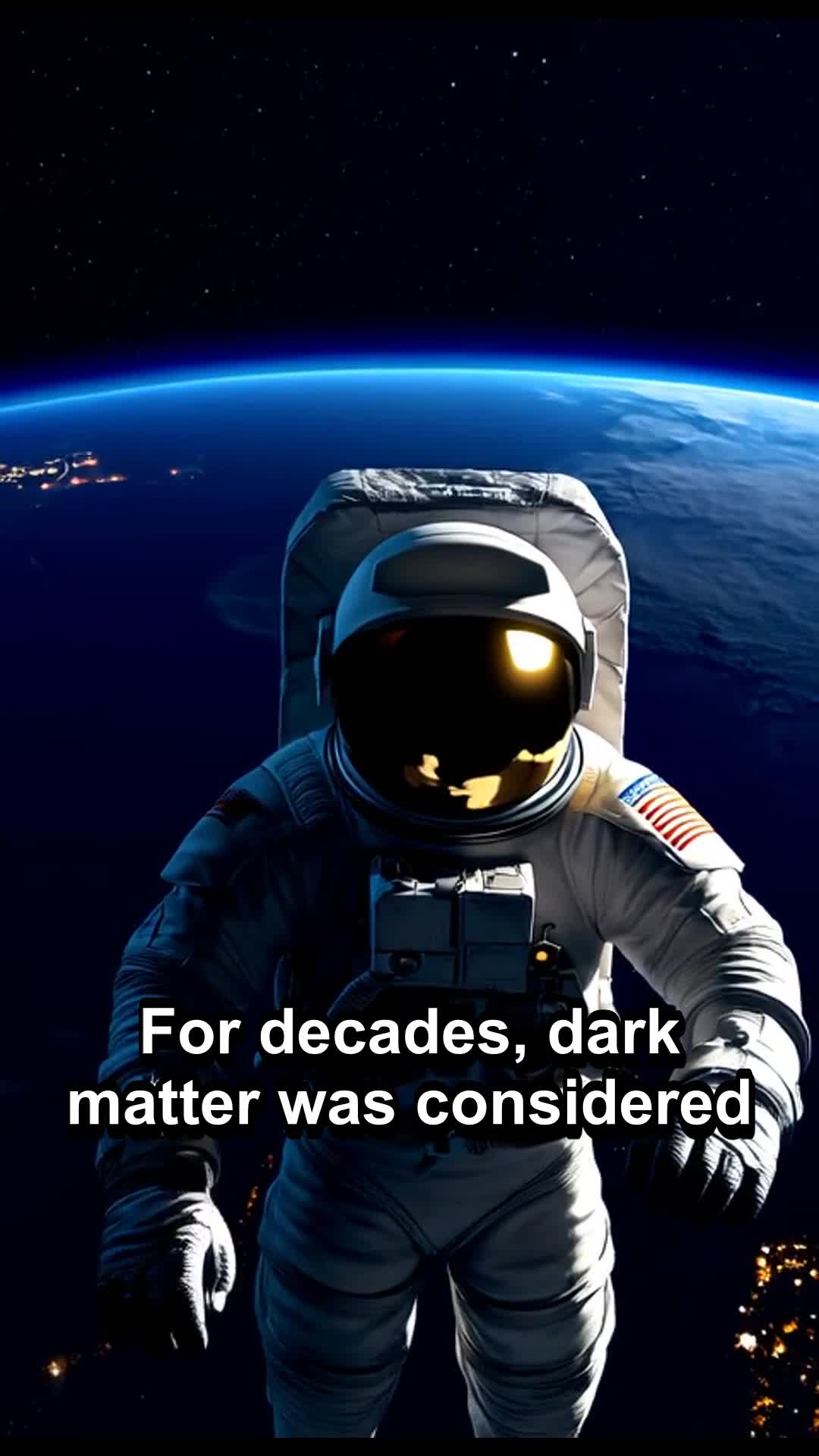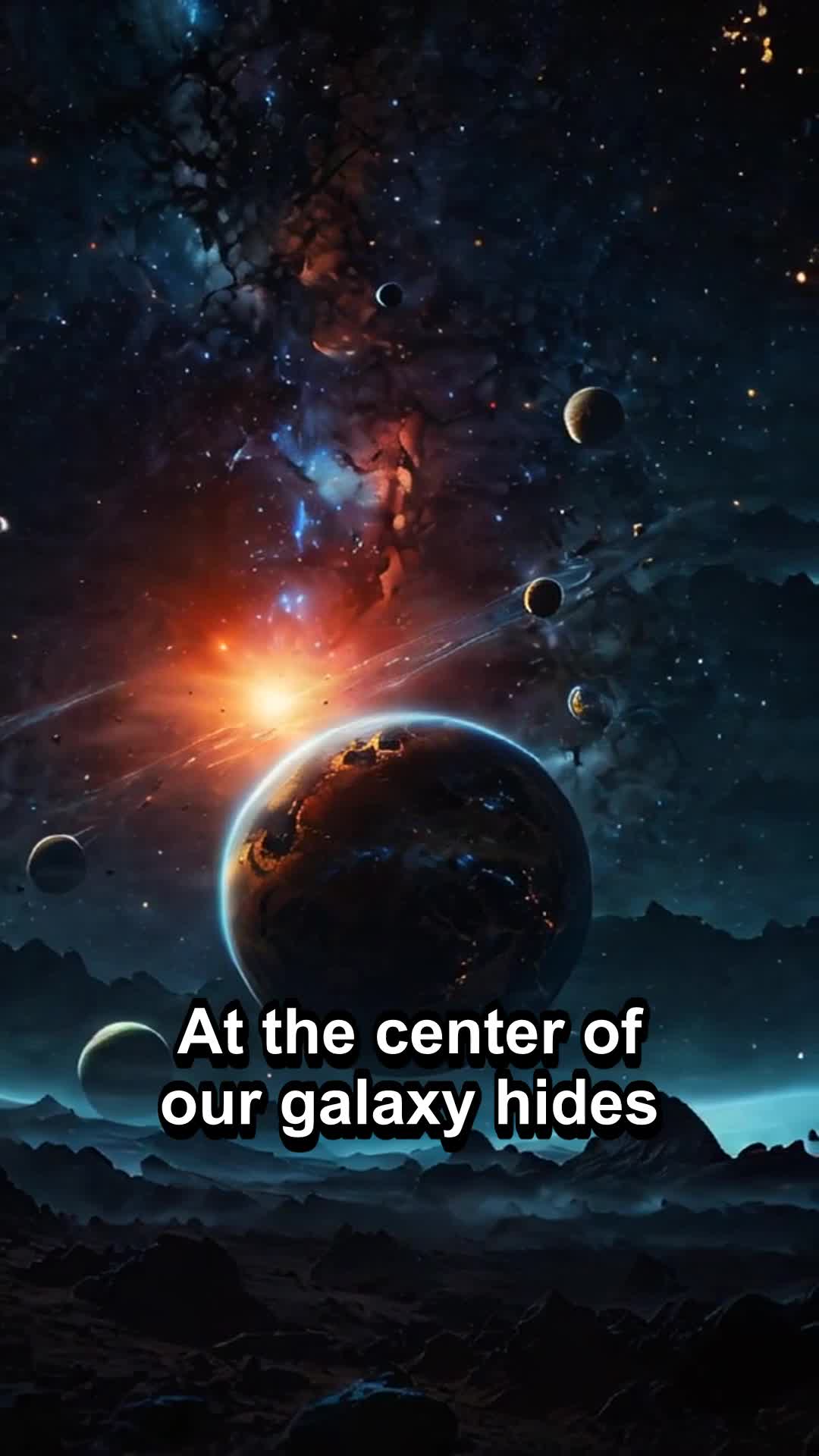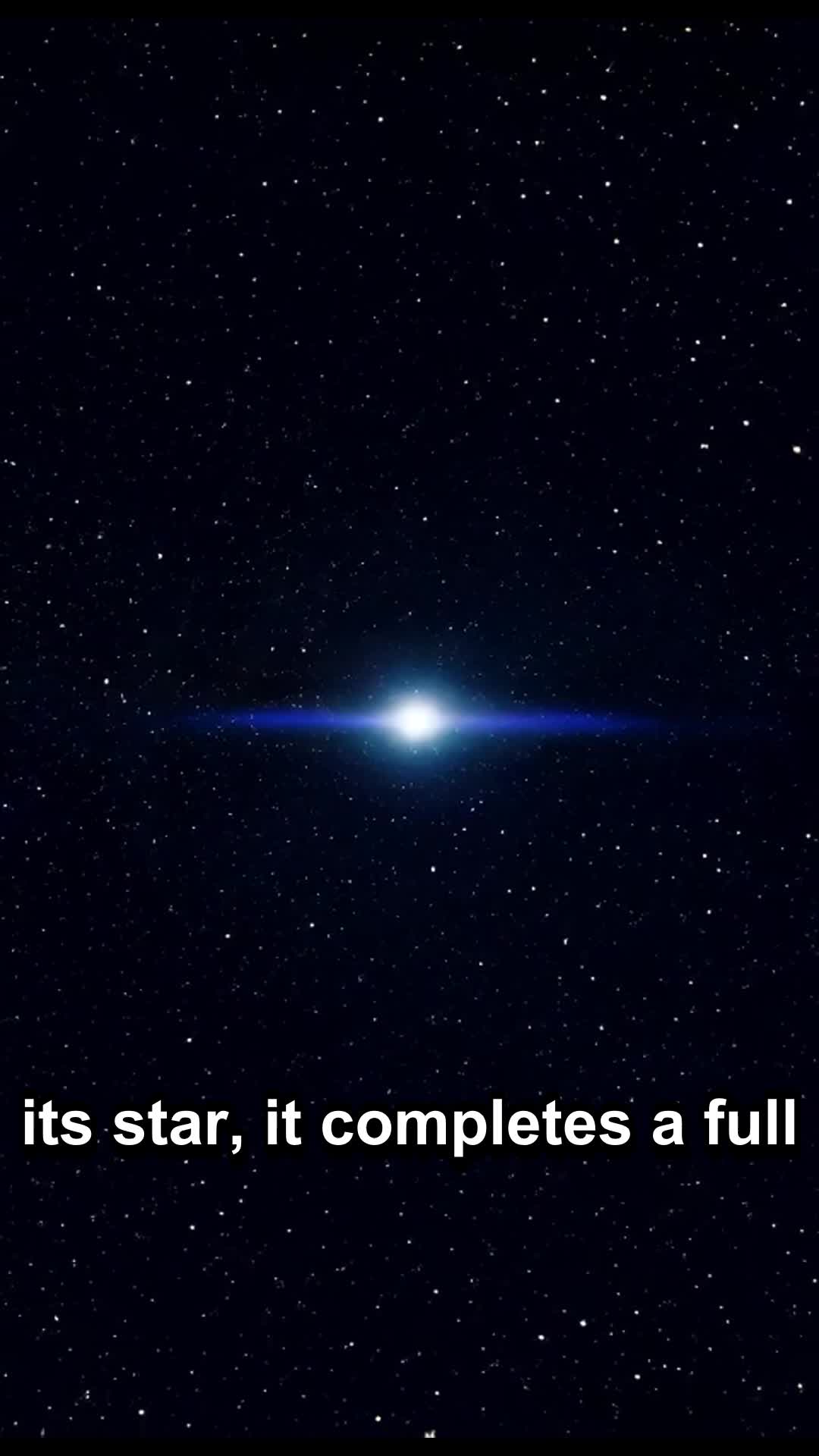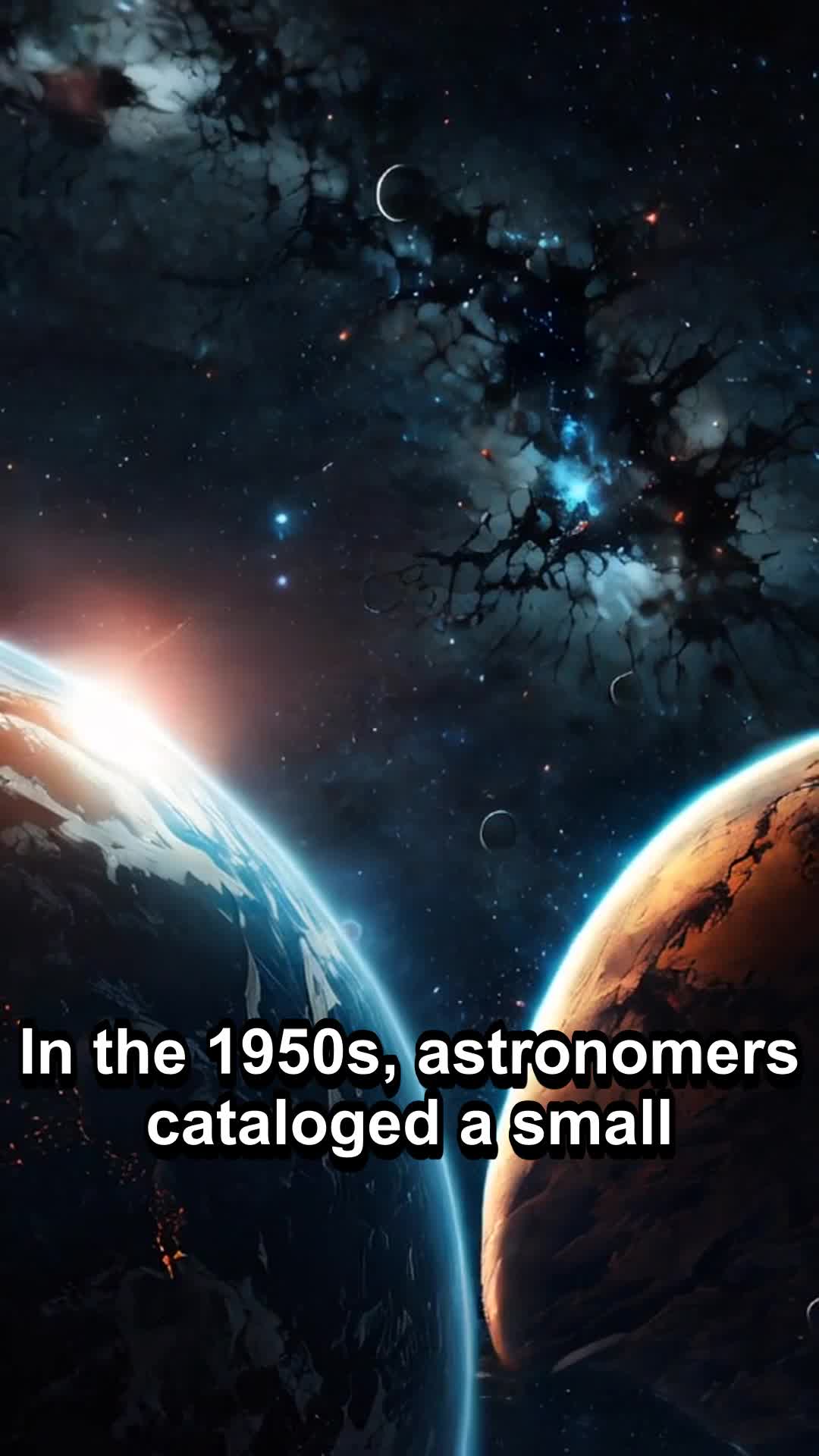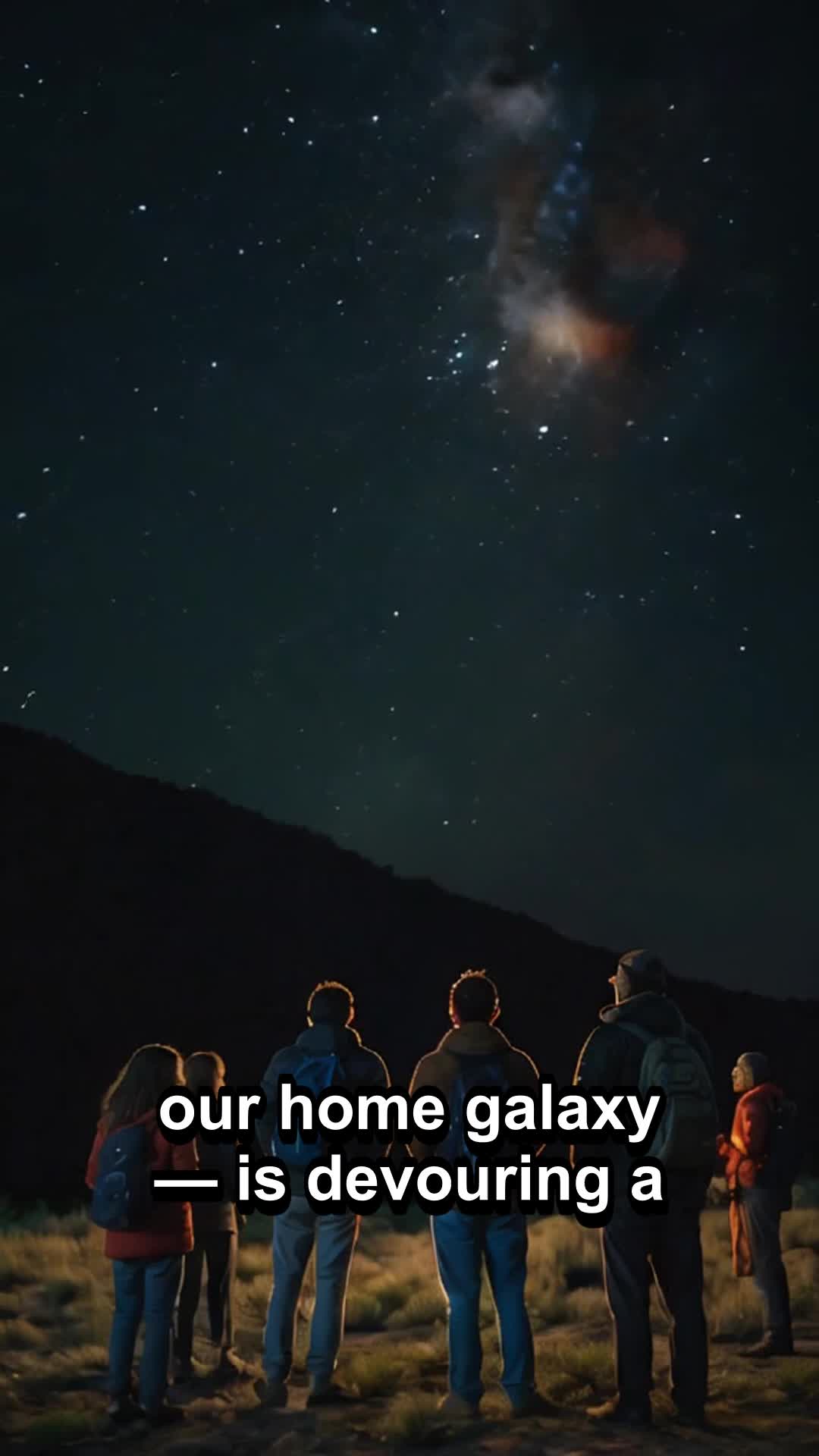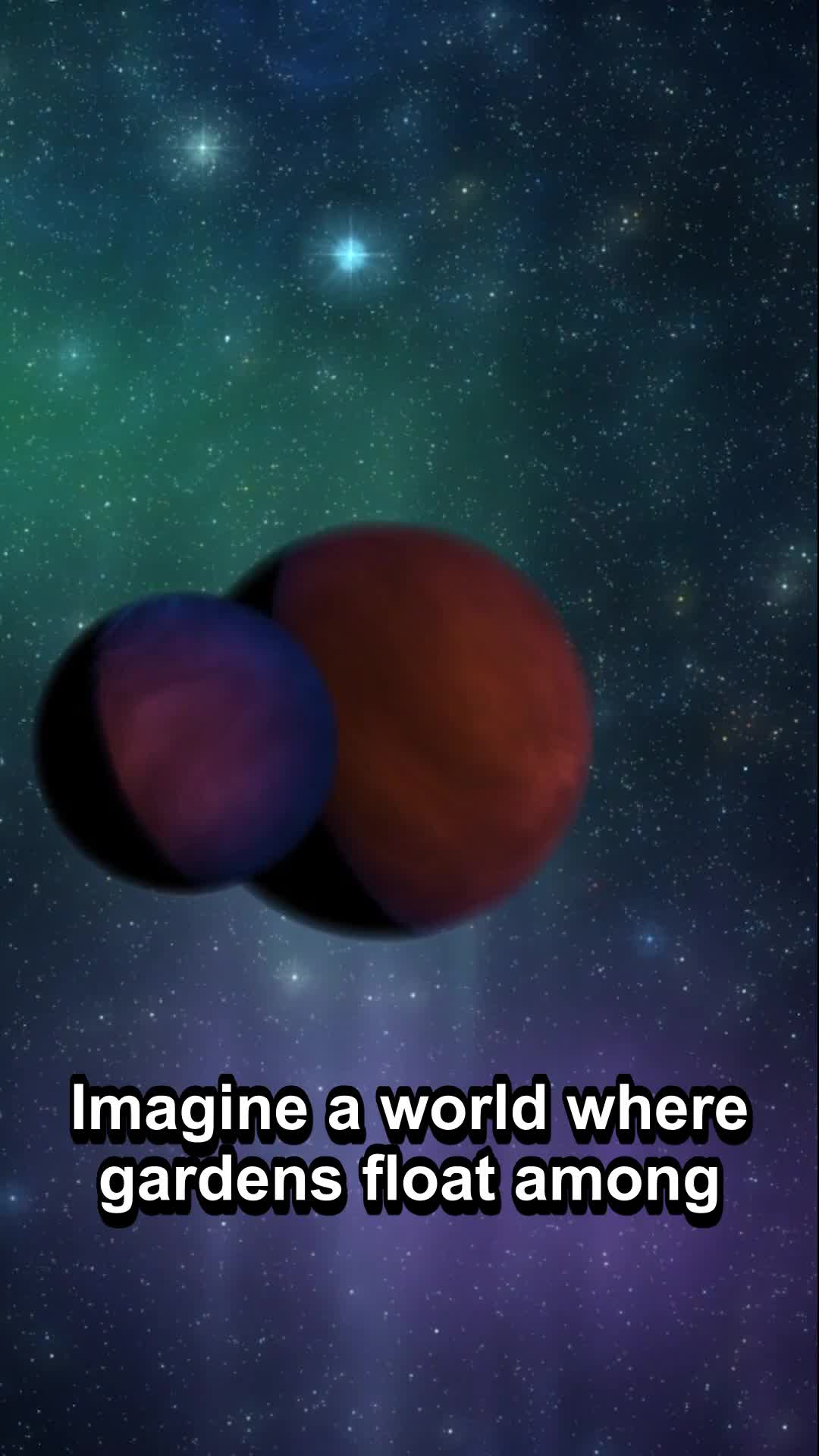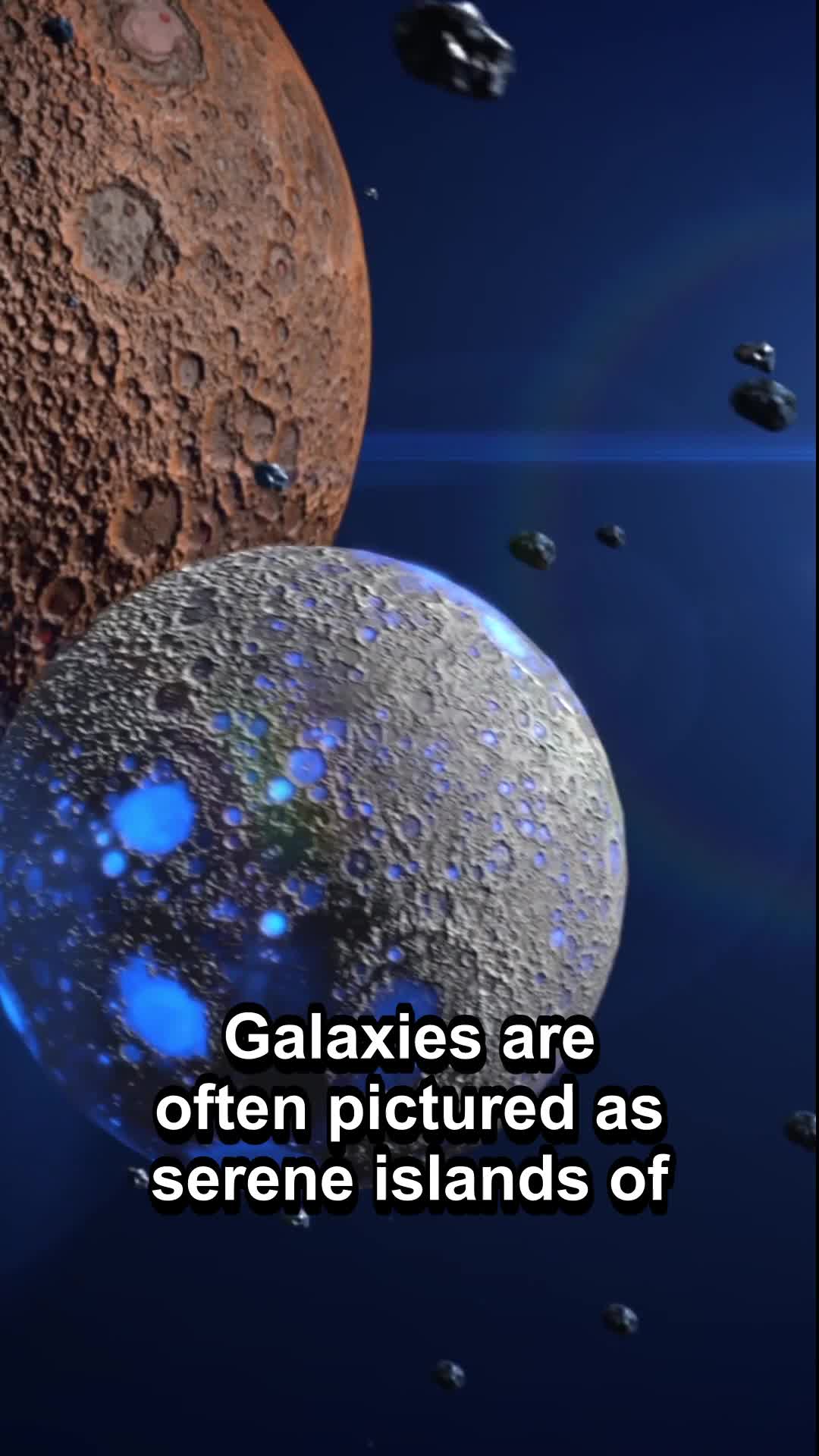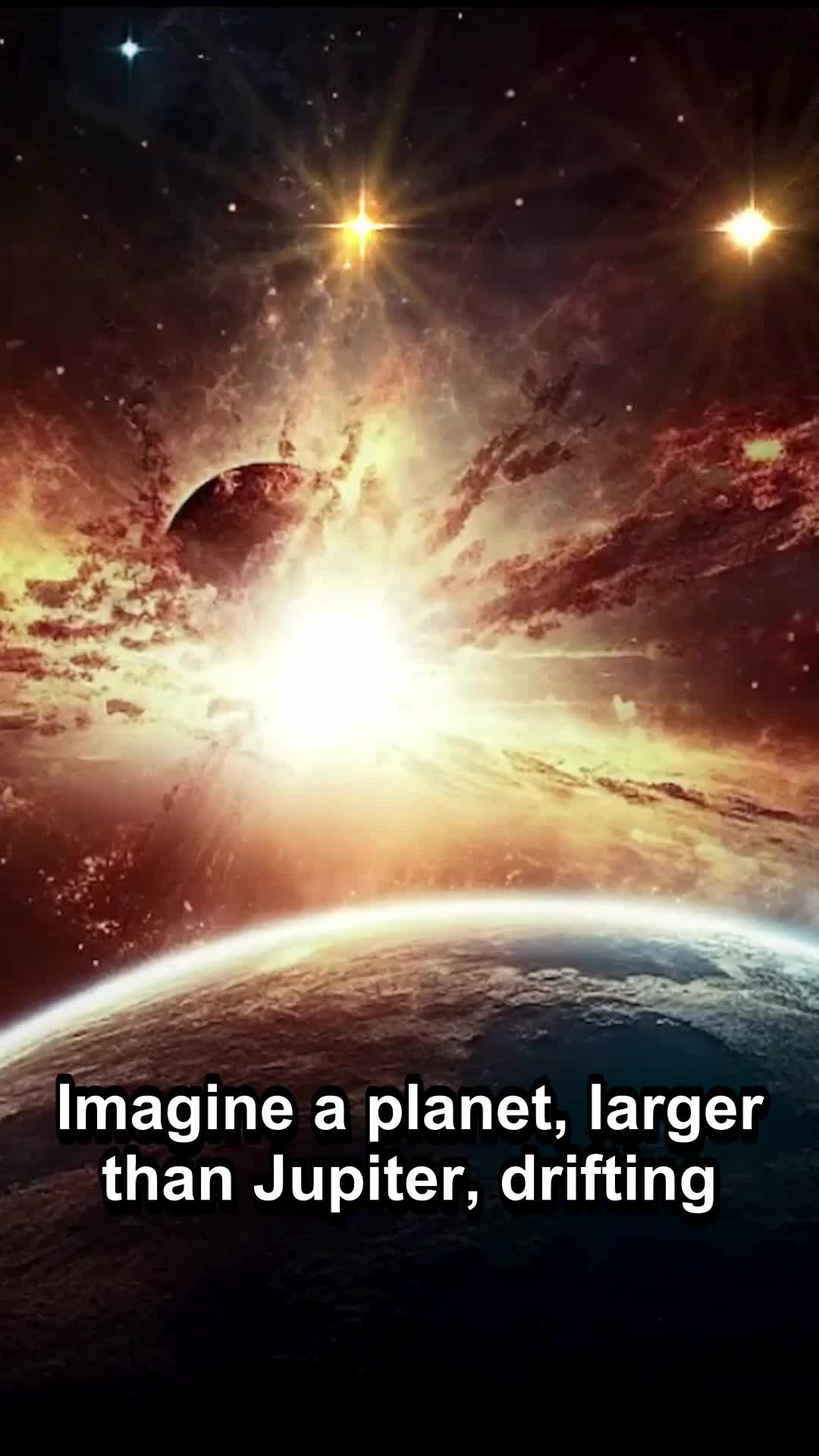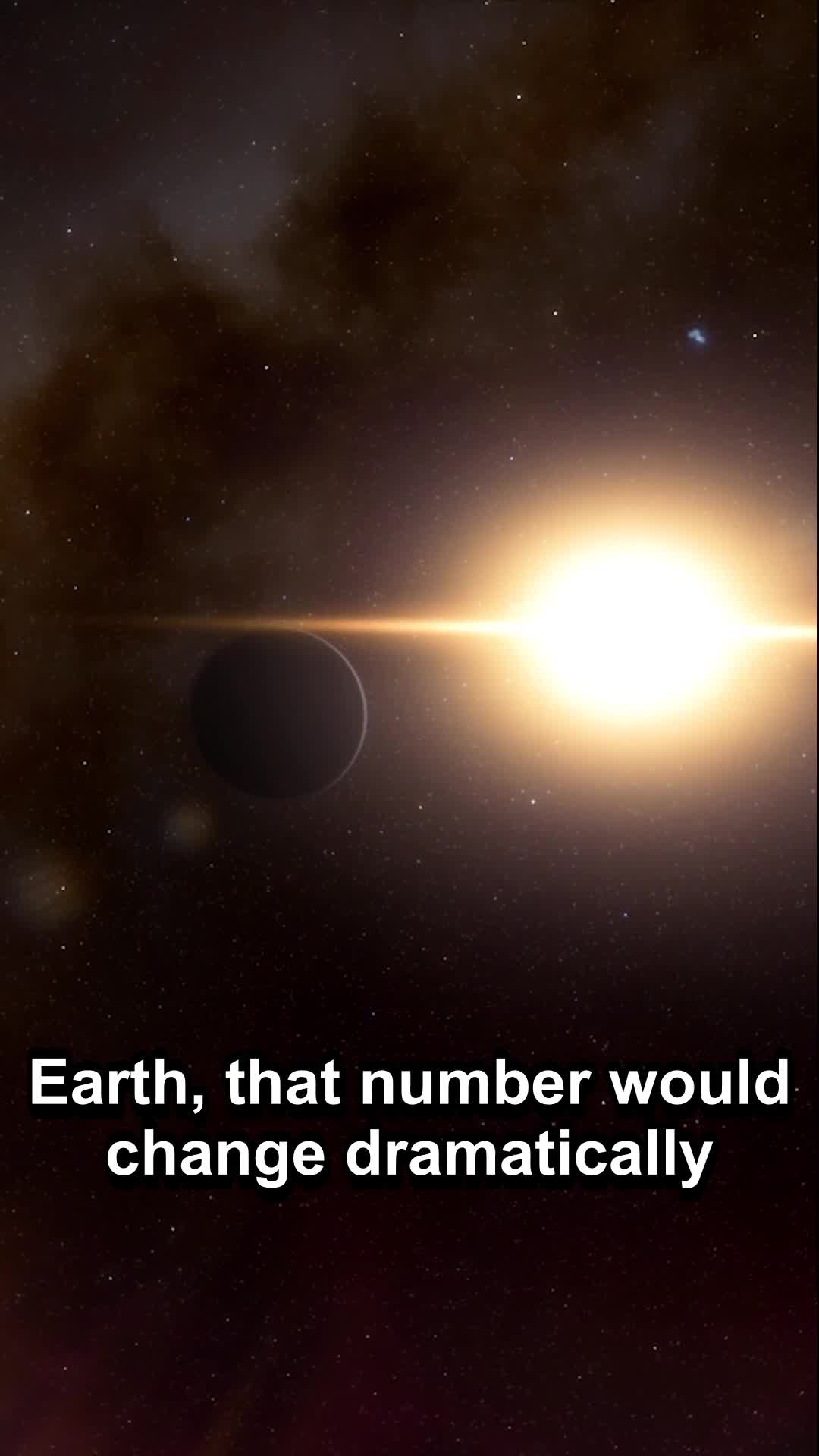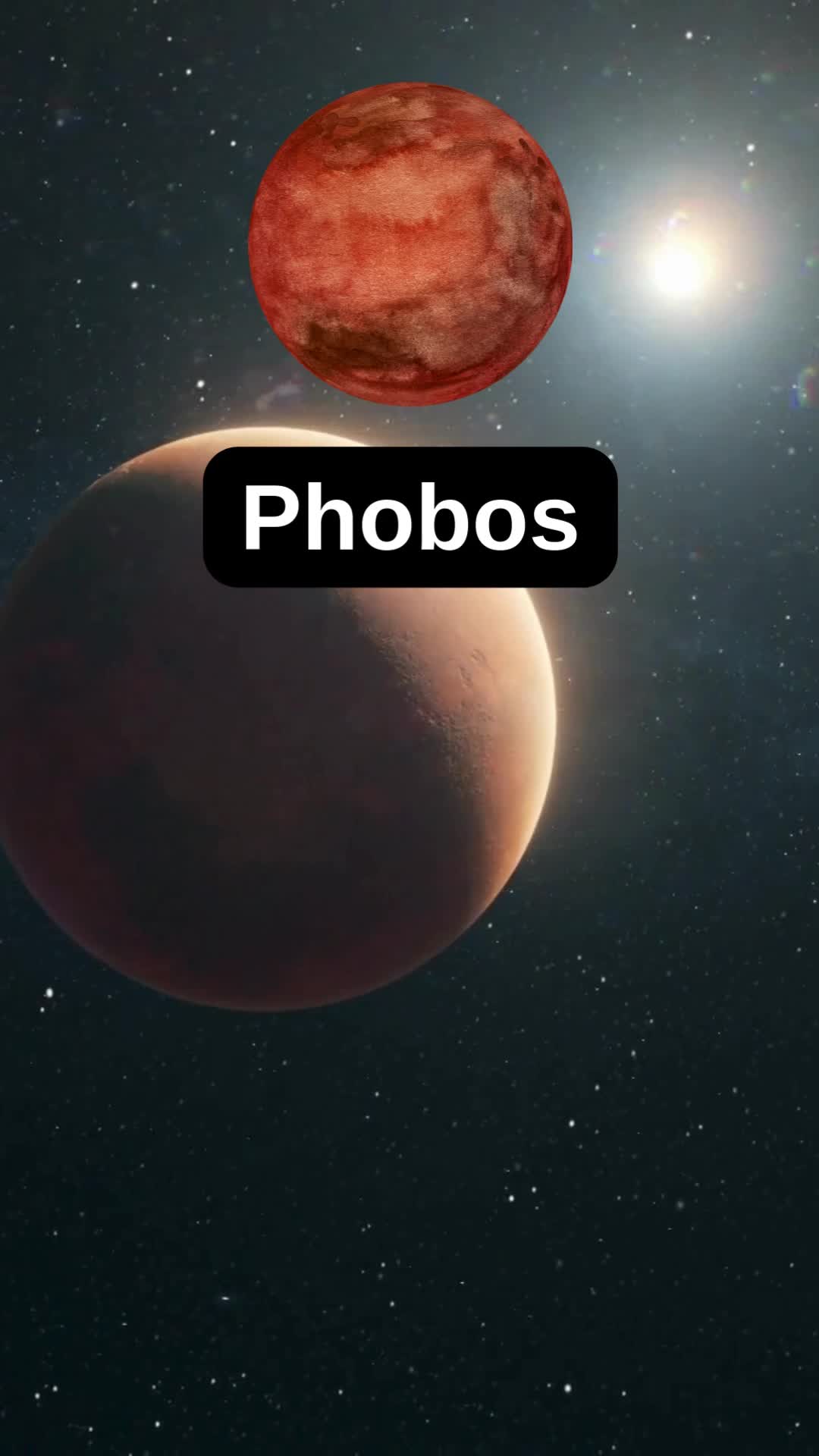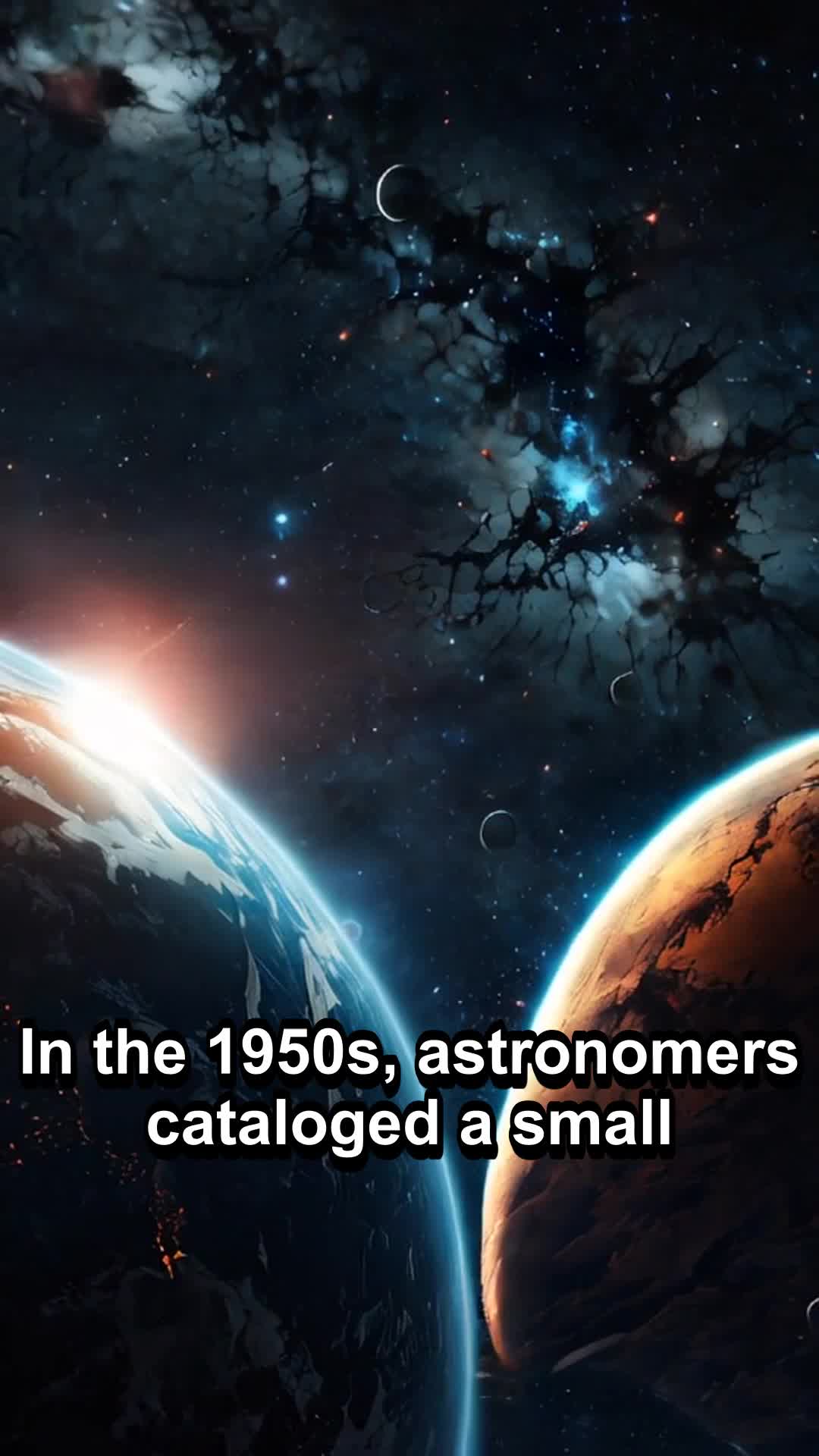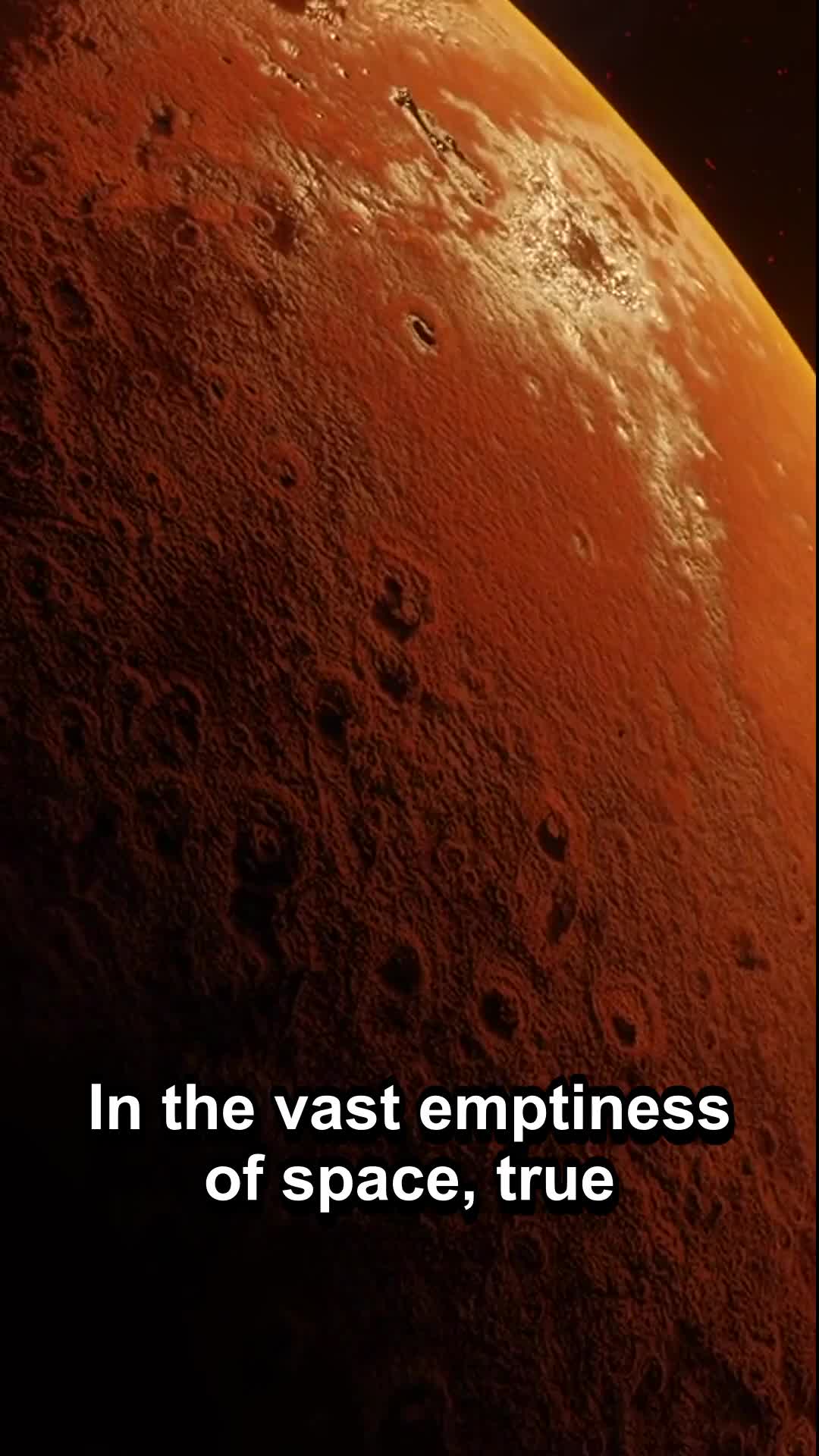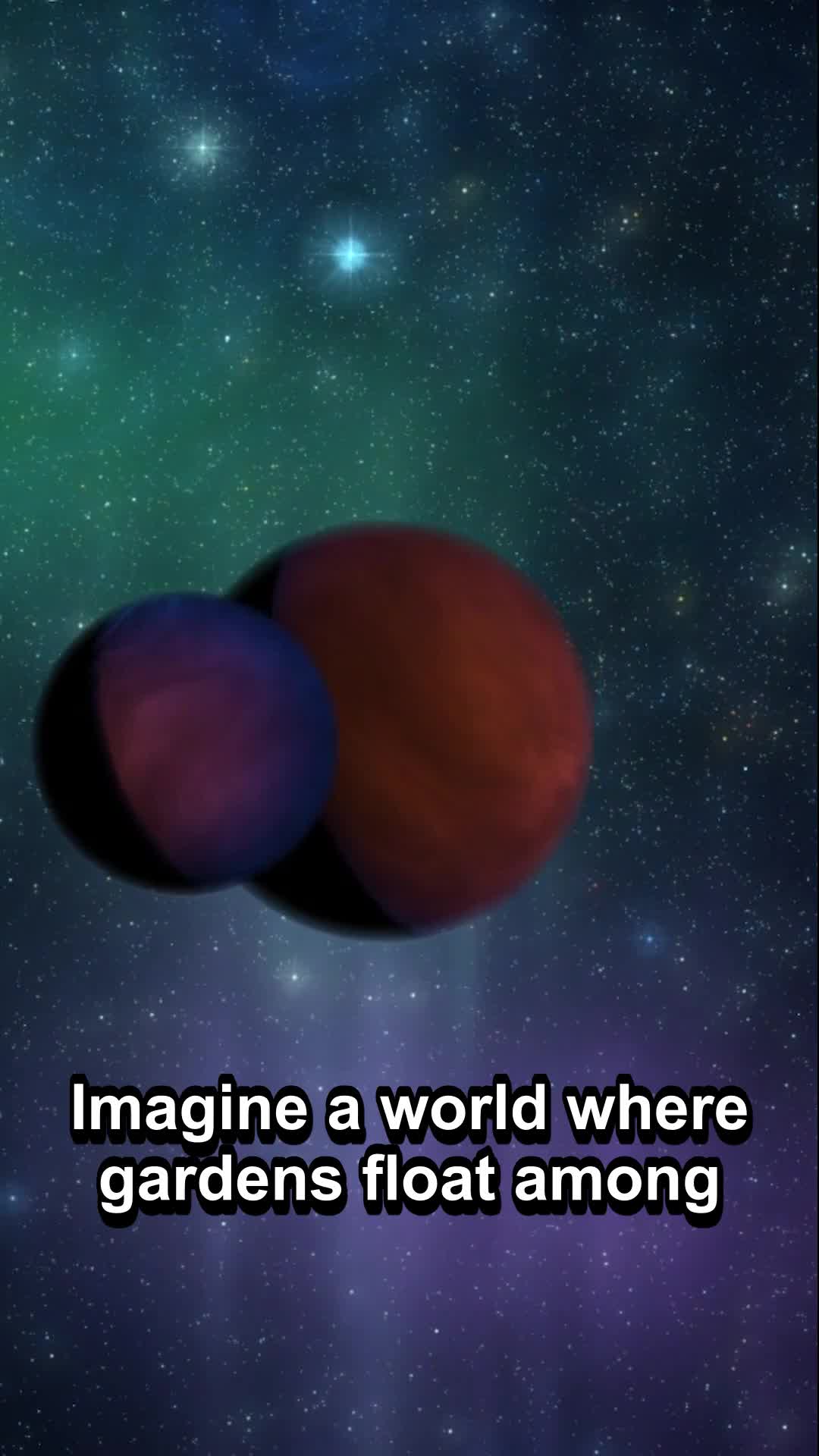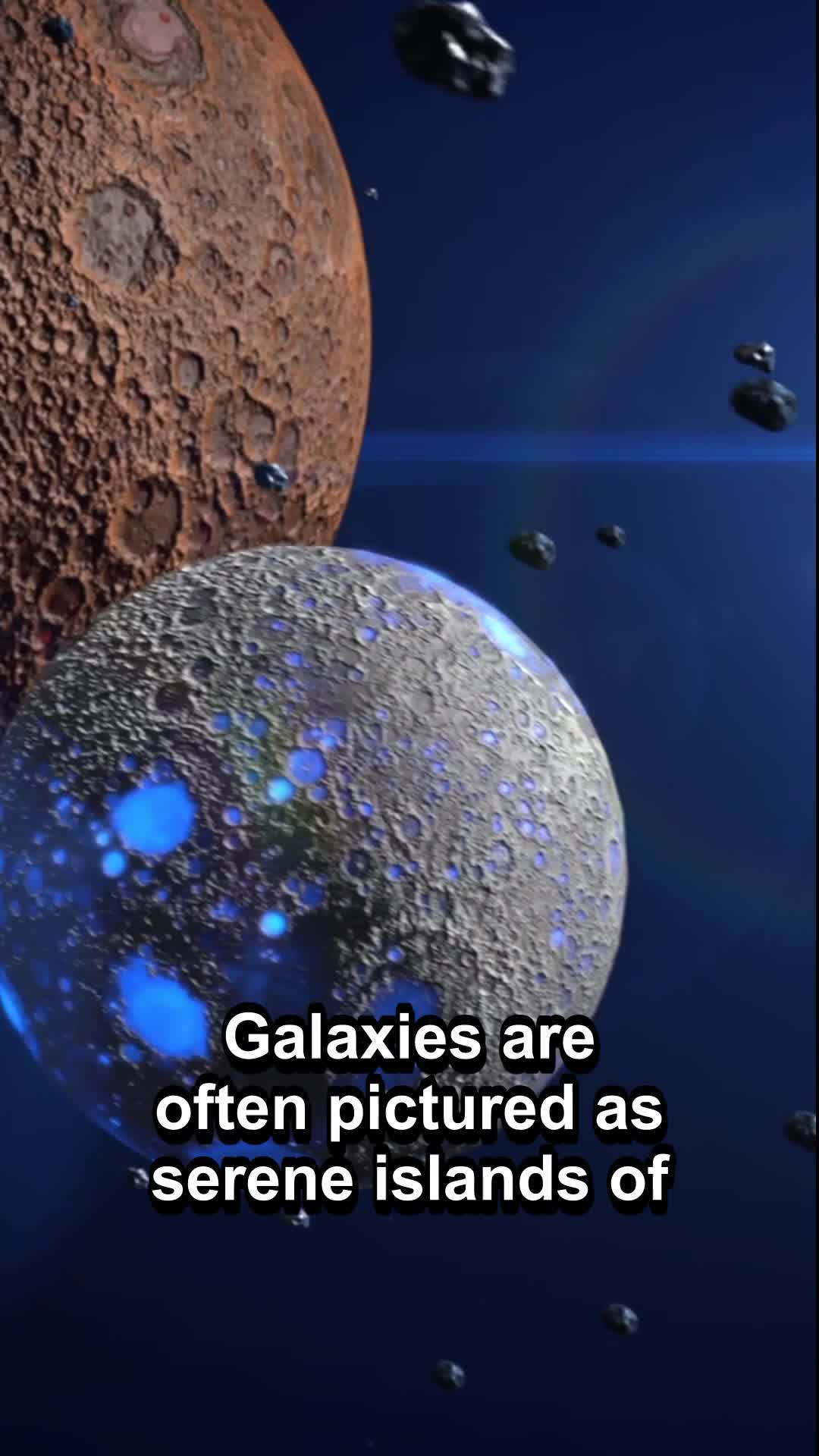Film & Animation
In this eye-opening video, titled "Why Scientists Are Alarmed: Urgent Environmental Warning!", viewers are taken on a profound journey into the reasons behind the growing concern among the scientific community regarding our planet's future. The video begins with a series of interviews with renowned environmental scientists, each sharing their insights on the recent alarming trends in climate change, biodiversity loss, and ecosystem degradation. The narrative then shifts to a detailed analysis of the latest data on global temperature rises, melting ice caps, and the increasing frequency and severity of natural disasters. Through engaging graphics and compelling narration, the video illustrates how these changes are interconnected and pose a significant threat to human survival and well-being. As the video progresses, it explores the human activities that are exacerbating these environmental issues, including deforestation, pollution, and unsustainable agricultural practices. It also highlights the impact of these actions on wildlife and natural habitats, showcasing poignant examples of species that are now on the brink of extinction. In an effort to turn knowledge into action, the video concludes with a powerful call to action, urging viewers to take immediate steps towards sustainability. It discusses the importance of policy changes, corporate responsibility, and individual actions that can make a real difference. The video provides practical tips on reducing carbon footprints, supporting sustainable businesses, and advocating for stronger environmental protections. Overall, "Why Scientists Are Alarmed: Urgent Environmental Warning!" not only educates its audience about the critical environmental challenges we face but also empowers them with the knowledge and tools necessary to contribute to a sustainable future. It's a must-watch for anyone concerned about the health of our planet and the legacy we leave for future generations.
This is a video about Time Crystals in Space The Physics That Shouldnt Exist
In this captivating video, we delve deep into the mysteries of Jupiter’s Great Red Spot, exploring the intriguing possibility of its disappearance. The Great Red Spot, a massive storm larger than Earth itself, has been a prominent feature of Jupiter for over 350 years, observed since the 17th century. However, recent observations suggest that this colossal storm may be shrinking, sparking widespread curiosity and concern among astronomers and space enthusiasts alike. The video kicks off with stunning visuals of Jupiter, showcasing the Great Red Spot in all its glory, followed by a detailed explanation of what the Great Red Spot is. This giant anticyclonic storm, known for its reddish hue and high-speed winds, has fascinated scientists for decades. Our expert host explains the composition, scale, and dynamics of the storm, providing viewers with a clear understanding of its significance in our solar system. As the narrative progresses, the video presents recent data and research findings from top space agencies, including NASA and ESA, which indicate a noticeable decrease in the size of the Great Red Spot. Through engaging interviews with planetary scientists and animated simulations, the video explores various theories that might explain why the storm is shrinking. These include changes in Jupiter’s atmospheric conditions, energy shifts, and the storm’s natural lifecycle. Moreover, the video discusses the potential consequences of the disappearance of the Great Red Spot on Jupiter’s atmospheric dynamics and what it could mean for future studies of the gas giant. It raises questions about how this change might affect our broader understanding of atmospheric processes on other planets, including Earth. To give viewers a comprehensive look at the issue, the video also incorporates historical comparisons, showing how the Great Red Spot has changed over time through past observations and imagery. Additionally, the segment on technological advancements in telescope and satellite technology illustrates how improved tools have helped us better understand and monitor changes on distant planets. Finally, the video encourages viewers to ponder the future of Jupiter’s Great Red Spot and invites them to stay engaged with ongoing space research. With its mix of expert commentary, cutting-edge science, and visually arresting graphics, this video is a must-watch for anyone interested in the ever-evolving mysteries of our solar system.
When we think of the largest objects in the universe, galaxies like the Milky Way or Andromeda often come to mind. However, in this enlightening video, we delve into the true behemoth of the cosmos, which might not be what you expect. This documentary-style video begins with a captivating introduction to the concept of galaxies, their types, and the methods by which astronomers measure their vast extents. As the video progresses, we pivot to focus on IC 1101, the galaxy that currently holds the title for the largest known in the observable universe. Located over a billion light-years away, IC 1101 dwarfs even the mighty Andromeda with a staggering diameter of about 6 million light-years. Our expert narrators and animated graphics help visualize this scale in comparison to our own galaxy, providing viewers with a sense of the immense size of IC 1101. The narrative then explores the fascinating history of how IC 1101 was discovered and the various observations and studies that have been conducted to understand its massive size and structure. We also dive into the intriguing dynamics within such a large galaxy, including the formation of stars, the behavior of its central black hole, and its interaction with neighboring galaxies in its cluster. Moreover, the video discusses the implications of the existence of such massive galaxies on our understanding of the universe and its formation. We interview leading astronomers and astrophysicists who explain the challenges and exciting prospects of studying IC 1101 and what it can tell us about the early universe and the future of cosmic exploration. To ensure a comprehensive understanding, the video includes simple yet detailed explanations suited for both astronomy enthusiasts and the general public. We wrap up with a discussion on the future of space exploration and the next generation of telescopes, poised to unravel more mysteries of the universe. Whether you're a seasoned stargazer or new to the wonders of the cosmos, this video promises an informative and awe-inspiring journey through one of the most fascinating subjects in space science.
In this fascinating exploration, we delve into the enigmatic world of the darkest known planet in the universe, a remarkable exoplanet that absorbs an astonishing 99% of the light that hits it. This video provides an in-depth analysis of this unique celestial body, beginning with its discovery and the innovative techniques astronomers used to detect its dark features. The journey starts with a brief overview of how exoplanets are generally discovered and the specific methods employed to find this unusual planet. The video highlights the role of the Kepler Space Telescope in this discovery and explains the significance of the planet's location and orbital characteristics. As we dive deeper, the video examines the composition and atmospheric conditions that contribute to this planet's extreme darkness. It discusses the scientific theories behind the absorption of light and how this relates to the planet's albedo. Experts in the field of astrophysics provide insights into the materials found on the surface of the planet, such as vaporized sodium and potassium, which are thought to play a crucial role in its light-absorbing properties. Furthermore, the implications of such a discovery are explored, considering what it tells us about the formation of planets and the potential for life in seemingly inhospitable environments. The video also speculates on the existence of other similar planets in the universe, discussing the ongoing research and future missions planned to explore these dark worlds further. To bring the cosmic story to life, the video includes stunning visualizations and animations that depict what the planet might look like, based on the data collected from telescopes and space probes. Additionally, interviews with leading astronomers and planet hunters offer a personal touch, sharing their excitement and the challenges they face in studying such a peculiar object. This video is not just a tale of discovery, but an invitation to wonder about the vast, mysterious universe. It challenges our understanding of what planets could look like and how they behave, pushing the boundaries of science and imagination.
Welcome to a deep dive into one of the most puzzling phenomena in modern astrophysics: galaxies that apparently lack dark matter. This video explores the groundbreaking discovery of galaxies such as NGC 1052-DF2 and NGC 1052-DF4, which have been observed to contain little to no dark matter, a finding that challenges our fundamental understanding of galaxy formation and composition. The video begins with a brief introduction to dark matter, a substance that, despite being invisible and detectable only through its gravitational effects, is thought to make up about 27% of the universe's mass-energy composition. Normally, dark matter is essential in the formation and structuring of galaxies, providing the gravitational glue that holds stars together in a galaxy. From here, we delve into the intriguing observations made by astronomers using the Dragonfly Telephoto Array. These observations of certain ultra-diffuse galaxies near the galaxy NGC 1052 have shown significantly less dark matter than expected, leading to intense scientific debate and research. Our expert host interviews leading astrophysicists who explain how these galaxies were discovered, the methods used to measure their dark matter content, and the theoretical implications of these findings. They discuss various theories that might explain the lack of dark matter, including interactions with other galaxies and the possibility of novel physics at play. The video also features stunning visualizations and animations that illustrate how galaxies are typically expected to behave and how these dark matter-deficient galaxies differ. These visuals help demystify complex concepts and make them accessible to both science enthusiasts and the general public. As we wrap up, the discussion shifts towards the future of space research, highlighting upcoming missions and technologies that may provide further insights into these mysterious galaxies. The video concludes by reflecting on how these findings could reshape our understanding of the universe and its fundamental laws. Whether you're a seasoned astronomer or just curious about the cosmos, this video is designed to provide you with a comprehensive understanding of why some galaxies don't have dark matter and the impact of these discoveries on the field of astrophysics.
Embark on a captivating journey through the cosmos as we explore one of the most mesmerizing phenomena in our galaxy - a star orbiting the supermassive black hole at the center of the Milky Way at an astonishing speed of 8,000 km/s. This video provides a comprehensive analysis and stunning visualizations of this cosmic dance, which occurs right at the heart of our galaxy. The video begins with an overview of the Milky Way, highlighting its massive black hole, known as Sagittarius A*. Through expert commentary and state-of-the-art graphics, we delve into the mechanisms of galactic dynamics and the significant role black holes play in shaping their surroundings. We then zoom in on the star in question, which is one of the few celestial bodies brave enough to skirt the edges of such a formidable gravitational force. The video explains how astronomers have been able to track this star's orbit through sophisticated technologies and the implications these observations have for our understanding of general relativity and black hole physics. Further, our documentary-style exploration discusses the challenges and breakthroughs in astrophysics that allow scientists to observe these high-speed orbital movements from millions of light-years away. We also consider the future of space research and the next-generation telescopes poised to provide even deeper insights into black holes and their cosmic ballet partners. In addition to the scientific analysis, the video includes interviews with leading astrophysicists and animations that bring the high-speed orbital path to life, offering viewers a detailed look at the scale and significance of such an event. This feature is not just a testament to human curiosity and ingenuity but also a glimpse into the profound mysteries that our universe holds. Whether you are a seasoned astronomer or a space enthusiast, this video will enrich your understanding of the universe and inspire awe at the complexities that lie within our own galaxy.
In this fascinating documentary-style video, we explore one of the most extraordinary astronomical discoveries of recent times—a planet that completes an orbit around its star every 18 hours. This video provides an in-depth analysis of this remarkable celestial body, beginning with its initial discovery by a team of international astronomers using advanced space telescopes. The video first introduces viewers to the basic concepts of exoplanet research, including the methods astronomers use to detect planets outside our solar system, such as the transit method and radial velocity technique. It then dives into the specifics of this ultra-fast orbiting planet, officially known as NGTS-10b, located about 1000 light years away from Earth. We cover the unique characteristics of NGTS-10b, focusing on its incredibly short orbital period, which makes it one of the fastest orbiting exoplanets known. The video explains the scientific significance of such a discovery, discussing what it tells us about planet formation, orbital dynamics, and the extreme conditions that can exist on other worlds. Expert interviews are interwoven throughout the video, featuring astronomers and planetary scientists who provide insight into the challenges and exhilarations of studying such an unusual planet. These experts discuss the potential atmospheric composition of NGTS-10b, its likely gravitational interactions, and the intense stellar radiation it must withstand due to its proximity to its host star. Additionally, the video examines the future of research in this area, including upcoming missions and technologies that may allow us to learn even more about ultra-short period planets. Viewers will also learn about the broader implications of these findings, including how they influence our understanding of planetary systems throughout the galaxy. This video is not only a deep dive into the science of a peculiar planet but also a celebration of human curiosity and the ongoing quest to understand the universe. Join us as we unravel the mysteries of NGTS-10b and consider what other secrets might be lurking in the cosmos.
In this captivating video, we delve into the perplexing and unprecedented phenomenon of a galaxy that seemingly vanished from the night sky. Our journey begins with an overview of the initial observations made by astronomers using powerful telescopes stationed around the globe. These initial findings set the scientific community abuzz with theories and speculations. The video then explores the various hypotheses proposed by leading astrophysicists to explain this cosmic mystery. One theory suggests that the galaxy may have been obscured by a massive interstellar dust cloud, effectively hiding it from view. Another possibility discussed is gravitational lensing, where the light from the galaxy is bent and redirected by the gravitational force of an intervening cosmic body, making the galaxy appear to vanish. We also examine the role of dark matter in this phenomenon. The video includes animations that illustrate how this invisible matter could potentially envelop and isolate a galaxy, cutting it off from the rest of the universe. Furthermore, interviews with experts provide insights into how this disappearance could impact our understanding of the universe’s structure and the future of galaxy observation. In addition to expert commentary, the video features stunning visualizations of the galaxy before its disappearance, alongside simulations of the aforementioned theories that might explain this enigma. These visuals not only enhance the viewer's understanding but also add a dramatic effect to the storytelling. The latter part of the video discusses the technological advancements in telescopes and observation techniques that could help solve this mystery. It also speculates on what the discovery or explanation of such a disappearance could mean for future astronomical studies and for our understanding of the universe as a whole. Join us as we explore this intriguing cosmic mystery, the science behind it, and the profound questions it raises about our universe. Whether you are a seasoned astronomer or a curious enthusiast, this video is sure to provide you with a wealth of information and stimulate your curiosity about the cosmos.
"Violent Space" is a captivating video that delves into the awe-inspiring and tumultuous phenomena occurring across the cosmos. This visually stunning exploration offers viewers a front-row seat to the universe's most dynamic and violent events, from the explosive deaths of stars to the chaotic collisions of galaxies. As the video begins, viewers are taken on a journey to witness supernovae — the spectacular explosions that mark the death of stars. These cosmic fireworks are not only beautiful to watch but also crucial to the spread of elements across the universe. The footage includes high-definition animations that illustrate how these explosions contribute to the creation of new stars and planets. The narrative then shifts to the violent gravitational ballet of galaxies colliding. These massive events, which can span hundreds of millions of years, are depicted through a combination of real telescope images and detailed computer simulations. The video explains the stages of galactic collisions, highlighting the formation of stunning galactic mergers and the birth of new star systems within them. One of the most gripping segments focuses on the mysterious and powerful black holes. "Violent Space" uses cutting-edge visual effects to show how these gravitational behemoths warp space and time, drawing in surrounding matter with irresistible force. The video also discusses recent discoveries about black holes, including their role in emitting powerful jets of energy that can impact entire galaxies. In addition to these cosmic phenomena, the video covers the tumultuous environments of planetary nebulas and star-forming regions. Viewers will learn about the lifecycle of stars and the violent processes involved in their birth and death, enhanced by expert commentary from leading astronomers and astrophysicists. "Violent Space" not only educates but also mesmerizes, using a powerful soundtrack and expertly crafted visual effects to enhance the dramatic and violent nature of the universe. This video is perfect for anyone fascinated by astronomy, space science, and the natural wonders of the universe.
In the vastness of space, galaxies are not static entities; they move, evolve, and sometimes even consume one another. Our latest video, "Cosmic Cannibalism: Witness a Galaxy Devouring Its Neighbor," offers a rare glimpse into one of the universe's most dramatic events: galactic mergers. This detailed video uses cutting-edge animations and expert commentary to explore the ongoing collision between two galaxies. The video begins by setting the cosmic stage, explaining how galaxies are structured and what happens when their paths cross. Through mesmerizing visuals, we show the initial gravitational pull that draws these massive structures together. Astronomers use terms like "galactic cannibalism" to describe these events, but what does that look like? Our video provides clear, detailed animations that illustrate how one larger galaxy begins to absorb a smaller neighbor, pulling it in with relentless gravitational forces. As the galaxies collide, we detail the stunning transformations that occur. Stars are flung into new orbits, and interstellar gas clouds crash into one another, sparking new waves of star formation. The video highlights specific phenomena such as starburst events and the formation of tidal tails, where stars and gas are drawn out into long streams away from the main bodies of the galaxies. Expert interviews pepper the narrative, offering insights from leading astronomers and astrophysicists. They discuss the significance of these events, not just as spectacular cosmic shows, but also as crucial processes that can alter the evolutionary course of galaxies. The merging process, which can span hundreds of millions of years, tells us a lot about the structure and future of our own galaxy, the Milky Way. Furthermore, the video delves into the potential fate of the Solar System in such a cosmic event, providing a perspective on what might happen if our own galaxy were to collide with another. The conclusion of the video offers a look ahead at upcoming missions and technologies that will allow humanity to better observe and understand these galactic mergers. By the end of our video, viewers will not only have witnessed the incredible phenomenon of a galaxy consuming another but will also appreciate the cosmic forces at play that shape our universe. This video is a must-watch for anyone intrigued by the mysteries of space and the dynamic processes that drive it.
Discover the fascinating journey of plants in outer space with our in-depth video, "Thriving Flora: How Plants Adapt & Grow in Space Environments." This video explores the groundbreaking research and experiments conducted by scientists to understand how plants can survive and thrive beyond Earth's atmosphere. As humanity edges closer to long-duration space missions and possibly colonizing other planets, understanding plant life in space becomes crucial. The video begins with a historical overview of the first experiments on plant growth in space, detailing the challenges faced by early space biologists. It highlights key missions, such as the experiments aboard the International Space Station (ISS), where various plant species, including zinnias and wheat, have been cultivated. Viewers will learn about the unique environmental conditions of space, such as microgravity and high radiation levels, and how these factors impact plant growth, development, and photosynthesis. Our expert interviews provide insight into the innovative technologies and methods developed to facilitate plant growth in such an alien environment. These include advanced hydroponic and aeroponic systems, LED lighting setups tailored to simulate sunlight, and genetically modified plants designed to withstand extreme conditions. The video also showcases real-time footage and time-lapse sequences of plants growing aboard the ISS, offering viewers a visual representation of how plants adapt their growth patterns in space. Furthermore, the video discusses the psychological benefits for astronauts of having green, growing things aboard spacecraft and the future implications of space-grown plants for sustainable life support systems. It also considers ethical and biosecurity issues involved in transferring Earth's flora to extraterrestrial environments. This comprehensive video is not just an informative watch but also a call to imagine the possibilities that space botany holds for the future of interplanetary travel and habitation. Join us as we delve into the green frontier, where science fiction meets science fact, and witness how plants are not just surviving but flourishing in the final frontier.
Dive into the vastness of the cosmos with our latest video, "Exploring the Mysteries of the Universe: A Journey Through Galaxies." This visually captivating journey takes you through the awe-inspiring structures of the universe, from the well-known spirals of the Milky Way to the enigmatic and distant ultra-deep field galaxies. Starting with a brief introduction to what galaxies are, the video explains their role as the fundamental building blocks of the universe. We explore different types of galaxies – spiral, elliptical, and irregular – and discuss the unique characteristics and cosmic phenomena associated with each. The highlight of the video is the stunning visual imagery captured through advanced telescopes and rendered with state-of-the-art graphics. Viewers will see the beautiful spiral arms of the Milky Way, the massive elliptical galaxy M87 with its supermassive black hole, and the chaotic beauty of interacting galaxies like the Antennae Galaxies. Further into the video, we delve into the latest research and discoveries in astrophysics, explaining how galaxies form, evolve, and the pivotal role they play in the cosmic web of the universe. The narration helps demystify complex scientific concepts, making them accessible and engaging to a wide audience. We also pay tribute to the pioneers of space exploration and astronomy who have helped us understand our place in the cosmos better. The video concludes with a look at the future of galaxy exploration, including upcoming space missions and the next generation of astronomical telescopes. Whether you're a student, educator, or simply a curious mind eager to learn about the universe, this video promises to fuel your imagination and deepen your understanding of the cosmos.
In the vast cosmos, not all planets are bound to the gravitational pull of a star. Some wander through the galaxy as rogue planets, and this video delves into the intriguing world of these celestial nomads. "A Planet That Floats in Space Without a Star" explores the fascinating concept of rogue planets, celestial bodies that do not orbit a star but instead drift through the galaxy independently. We start by defining what rogue planets are and how they come into existence. Typically, these planets are believed to have been ejected from their original solar systems during the early stages of planetary formation. The forces involved in their ejection and the dynamics of these free-floating entities are discussed in detail, using high-definition animations and expert interviews. The video further explores the implications of these wandering planets on theories of planetary formation and survival. How do these planets maintain their atmospheres? What potential do they hold for hosting life? Theories suggesting that under certain conditions, rogue planets could harbor subsurface oceans kept warm by radioactive decay or residual heat from formation are examined. In addition, the documentary touches on how astronomers detect these elusive planets despite their lack of a starry backdrop. Techniques like gravitational microlensing, where the light from a distant star is momentarily focused by the gravity of a rogue planet passing between the star and Earth, are clearly explained with visual aids. The narrative also considers the future of space exploration and the role that rogue planets could play in understanding the universe's broader ecological systems. Could these planets serve as pit stops for interstellar travel? What resources might they offer? These questions are pondered with insights from leading astrophysicists and planetary scientists. Finally, the video looks ahead to upcoming missions and technologies that may provide more clues about the nature and prevalence of rogue planets. With captivating visuals and thought-provoking commentary, "A Planet That Floats in Space Without a Star" invites viewers to consider the complexities and wonders of our universe in a new light.
Dive deep into the fundamental forces that shape our universe with our detailed video, "Exploring the Forces of Gravity: A Comprehensive Visual Guide." This engaging and educational piece provides viewers with a thorough understanding of gravity, one of the four fundamental forces of nature that dictates the motion of planets, stars, galaxies, and even light itself. Starting with a historical perspective, the video features expert commentary on Isaac Newton's law of universal gravitation, which laid the groundwork for centuries of scientific inquiry. It delves into the groundbreaking work of Albert Einstein, who revolutionized our understanding with his theory of general relativity, explaining how gravity is not merely a force but the curvature of spacetime itself caused by mass. The video also covers contemporary research and advancements that continue to challenge and expand our knowledge of gravitational phenomena. Key experiments and missions, such as the Gravity Probe B and LIGO (Laser Interferometer Gravitational-Wave Observatory), are highlighted, demonstrating how scientists today are able to observe and measure gravitational waves, thus opening a new window into the cosmos. Visual aids, including detailed animations and real-life footage, help illustrate complex concepts like black holes, gravitational lensing, and the effects of gravity on time dilation. These visuals are not only captivating but also help demystify topics that can seem daunting at first glance. Additionally, the video addresses common questions and misconceptions about gravity, providing clear, concise answers that are scientifically accurate. It also explores potential future discoveries and the ongoing quest to unify gravity with quantum mechanics, which could one day lead to a complete theory of quantum gravity. By the end of this video, viewers will have a solid understanding of both the historical context and the cutting-edge science behind gravity, equipped with the knowledge to explore further and appreciate how gravity truly shapes our universe.
In this captivating video, we explore a lesser-known yet dramatic aspect of our solar system: the impending destruction of Mars' moon Phobos. The narrative unfolds with breathtaking visuals and expert interviews that delve into the cosmic forces at play. Phobos, the larger of Mars' two moons, is gradually spiraling towards the red planet. Scientists predict that within 30 to 50 million years, gravitational interactions will cause Phobos to either crash into Mars or disintegrate into a ring similar to those around Saturn. The video begins with a historical overview of Phobos, discovered in 1877 by astronomer Asaph Hall. We then transition into a detailed explanation of tidal forces, the gravitational interactions between Mars and Phobos that are drawing the moon ever closer to the Martian surface. Visual animations help illustrate how these forces are slowly altering Phobos' orbit. Experts in planetary science discuss the future scenarios for Phobos, including the potential for it to break up due to the Roche limit, where Mars' gravitational pull will exceed the structural integrity of Phobos. This segment is enriched with simulations showing how this dramatic event might look from Mars and how it could form a temporary ring of debris around Mars, potentially visible from Earth. Furthermore, the video explores the implications of Phobos' demise on future Mars missions, including those planned by NASA and other international space agencies. The destruction of Phobos could pose challenges for Mars' orbiters and potential surface missions, requiring new strategies for navigation and debris mitigation. In conclusion, the video not only highlights the dynamic and ever-changing nature of our solar system but also invites viewers to reflect on the broader impacts of celestial events on space exploration and our understanding of planetary evolution. This educational and visually stunning presentation is an essential watch for anyone intrigued by astronomy, planetary science, and the future of space exploration.
In a captivating exploration of cosmic phenomena, the video "Mystery Unfolds: The Disappearance of a Galaxy Explained" delves into the startling observation of a galaxy that seems to have vanished from the night sky. This comprehensive analysis begins by introducing viewers to the specific galaxy in question, identified through telescopic images and data gathered over the past decades. As the video progresses, it presents expert interviews with astronomers and astrophysicists who discuss the possible scientific explanations behind this phenomenon. The primary focus of the discussion is on dynamic cosmic events such as black hole activity, galaxy collisions, and dark matter interactions that could potentially lead to a galaxy becoming obscured or invisible from our vantage point. The video uses stunning visual effects to simulate these events, providing a vivid and understandable representation of complex astronomical concepts. Additionally, the narrative explores historical precedents where celestial bodies have undergone significant transformations or shifts in visibility. It compares these instances with the current scenario, drawing parallels and noting differences. The video also highlights the tools and technologies used in modern astronomy, such as the Hubble Space Telescope and the James Webb Space Telescope, explaining how these instruments help scientists monitor and study galaxies far beyond our own Milky Way. Towards the end, "Mystery Unfolds: The Disappearance of a Galaxy Explained" discusses the implications of such a disappearance on our understanding of the universe and the future of astronomical research. It raises intriguing questions about the stability and longevity of galaxies, including our own, and what lessons can be learned from this mysterious occurrence. This video is not only a journey through the depths of space but also an invitation to think about the larger, often incomprehensible forces at play in our universe. It’s perfect for anyone curious about astronomy, the dynamics of galaxies, or the ever-evolving nature of our understanding of the cosmos.
Dive deep into the heart of cosmic violence with our latest documentary, "The Fury of the Cosmos: Unveiling the Violent Forces of Space." This captivating video explores the tumultuous phenomena that occur across the universe, shedding light on the chaotic yet fundamental forces that shape our cosmos. The video begins by setting the stage with a stunning visualization of the universe's vastness, highlighting areas where violence is a key player in cosmic evolution. From the explosive fury of supernovae to the relentless pull of black holes, the documentary covers a broad spectrum of astronomical events that exemplify the theme of violence on a cosmic scale. As the journey progresses, viewers are treated to high-definition imagery and animations of various violent cosmic events. The segment on supernovae explains how these stellar explosions are crucial for the synthesis of heavy elements which, in turn, are essential for life as we know it. The documentary delves into the mechanics of these explosions, illustrating the processes that lead to such spectacular outbursts. Next, the focus shifts to the mysterious and all-consuming black holes. The video examines the role of these gravitational behemoths in galactic dynamics, including their ability to rip apart stars and influence the growth of galaxies. Through expert interviews and graphical simulations, we explore how black holes are not just destructive forces but also key players in the universe's structure and evolution. The documentary also covers the violent collisions between galaxies, which lead to their eventual mergers. These cosmic encounters are demonstrated through a series of simulations that show the gradual process of galactic interaction, highlighting the formation of new star systems and the dramatic restructuring of galactic architecture. Throughout the video, expert astronomers and astrophysicists provide insights and commentary, adding depth and context to the visual spectacle. Their explanations help demystify the complex processes at play, making the violent universe more accessible and understandable to the viewer. In conclusion, "The Fury of the Cosmos" not only showcases the awe-inspiring power of cosmic violence but also emphasizes its necessity in the grand tapestry of the universe. This documentary is a must-watch for anyone fascinated by the forces of nature on the grandest scale.
This is a video about Plants Are Surviving in Space
Embark on a captivating journey across the cosmos in our latest video, "Exploring the Mysteries of the Universe: A Journey Through the Galaxy." This visually stunning presentation takes you deep into the heart of space, showcasing the incredible beauty and complexity of our galaxy. From the swirling arms of spiral galaxies to the intense glow of nebulae and the enigmatic presence of black holes, this video offers a comprehensive overview of celestial phenomena. The video begins with a breathtaking view of the Milky Way, providing insights into its structure and the variety of stars that call it home. As we travel beyond our solar neighborhood, viewers will learn about different types of galaxies, including spiral, elliptical, and irregular galaxies, each illustrated with high-definition imagery and animations to enhance understanding. Key segments include an in-depth look at the formation of stars within nebulae, the dramatic lifecycle of supernovae, and the mysterious allure of black holes. What role do these cosmic giants play in the architecture of space? How do they influence the evolution of galaxies? These questions and more are addressed, providing viewers with a rich narrative that is both informative and thought-provoking. Moreover, the video discusses the significance of dark matter and dark energy in shaping the universe. With expert commentary from leading astronomers and astrophysicists, we delve into the latest research and theories that push the boundaries of what we know about the universe. "Exploring the Mysteries of the Universe: A Journey Through the Galaxy" is not just a visual treat; it's an educational experience that brings the wonders of the universe closer to home. Whether you're a space enthusiast, a student, or simply curious about the cosmos, this video will ignite your imagination and deepen your understanding of the universe.
